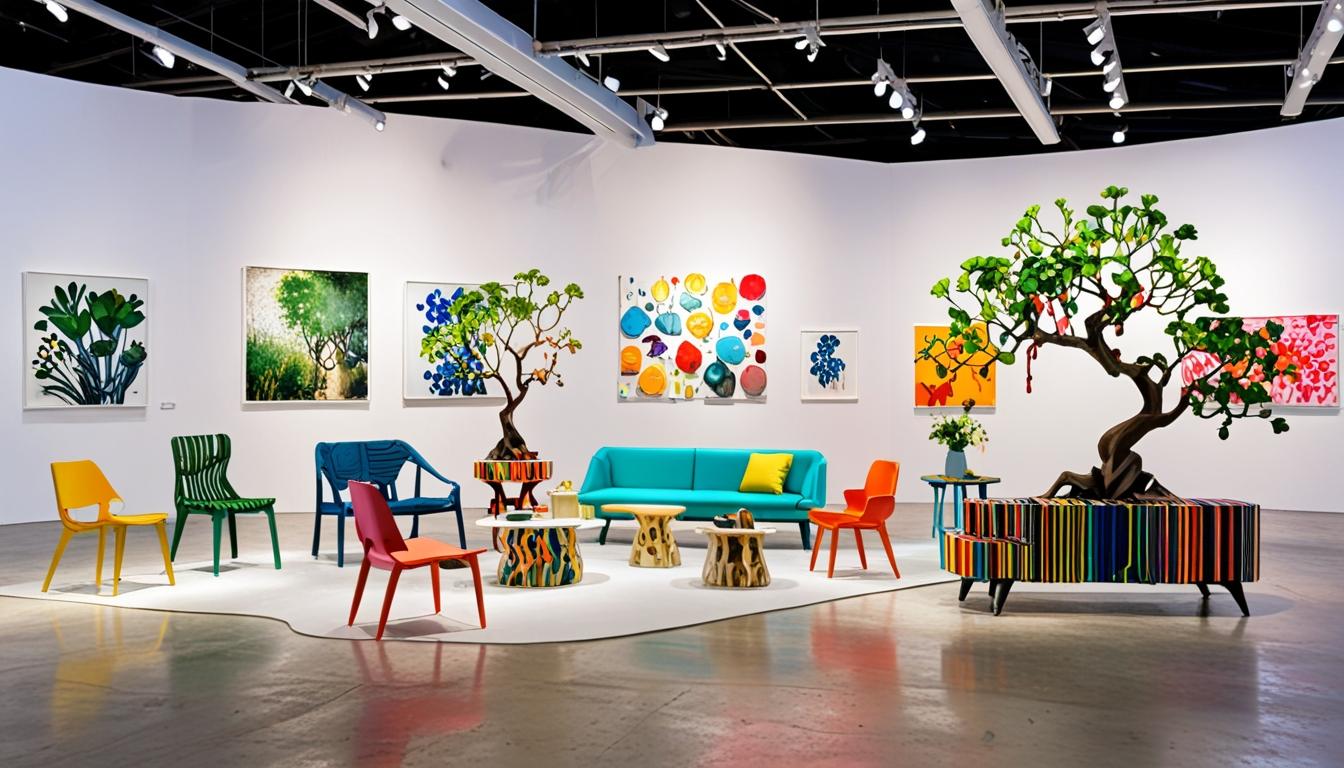To dress as a project manager, you'll want to blend professionalism with a touch of personal style. Start with well-fitted button-up shirts and dress pants or chinos, ensuring your clothes are clean and wrinkle-free. Opt for business attire during the week, and don't hesitate to adjust based on your client's expectations for meetings. Casual Fridays? Think light sweaters or tailored trousers. Remember, grooming matters too; styled hair and polished shoes enhance your professional image. When you align your wardrobe with industry norms, you build credibility and rapport, setting the stage for success in your role. Excited to explore more tips?
Dress Code Basics

When it comes to dressing as a project manager, understanding your company's dress code is vital. The dress code can range dramatically, from business formal to casual, depending on your organization's culture and the industry standards. This means you'll need to adapt your wardrobe to fit in seamlessly with your environment. Additionally, being aware of how different brands, like Nike, have evolved over the decades can help you choose stylish yet professional apparel that reflects your personal brand and competence in your role. For instance, vintage Nike clothing showcases quality and design that can elevate your professional look, especially in more casual settings where comfort meets style, such as vintage Nike identification.
For many project managers, a typical outfit includes button-up shirts paired with dress pants or khakis. Clean, wrinkle-free clothing is essential for maintaining a professional appearance. In IT environments, a business casual approach is often the way to go, enhancing your approachability while still looking sharp. However, don't underestimate the power of a formal suit for high-stakes meetings or client interactions; dressing up can make a significant impact.
You might also find that Casual Fridays allow for smart casual options, like collared shirts with jeans. While these days offer a chance to relax your style, it's important to maintain a level of professionalism, so avoid anything too laid-back.
Take time to observe the dress styles of management and your colleagues. This insight can be incredibly valuable, helping you understand what's deemed acceptable within your organization. By aligning your attire with the company's dress code, you not only show respect for your workplace but also enhance your credibility as a project manager. Remember, what you wear speaks volumes about your professionalism and can influence how others perceive your leadership abilities!
Office Attire Guidelines
When it comes to office attire, your professional appearance truly matters, as it sets the tone for how colleagues perceive you and your role as a project manager. You'll want to reflect on seasonal attire, opting for lighter fabrics like cotton in the summer and heavier materials in winter, ensuring you stay comfortable without sacrificing professionalism. Striking the right balance between comfort and a polished look will not only enhance your image but also inspire respect and confidence in your leadership.
Professional Appearance Matters
A polished appearance is imperative for project managers, as it directly impacts how colleagues and clients perceive their professionalism and competence. To achieve this, you should aim for business attire from Monday to Thursday, opting for button-up shirts paired with dress pants or khakis. Clean, wrinkle-free clothing not only boosts your image but also enhances others' perceptions of your competence. It's essential to remember that your professional appearance reflects not just your personal brand but also your respect for the corporate culture you're part of.
Dressing slightly more formally than your team can help you stand out as a role model, fostering respect and creating an environment of professionalism. Adhering to your company's dress code is crucial, as it aligns you with organizational expectations, whether those lean toward business casual or formal attire.
Additionally, consider seasonal variations in your wardrobe—such as wool pants in winter and breathable cotton in summer—to maintain comfort while projecting that polished look. Ultimately, investing in your appearance is an investment in your credibility, paving the way for successful interactions and collaborations in your project management journey.
Seasonal Attire Considerations
Dressing for the season is essential for project managers who want to maintain professionalism while staying comfortable. Seasonal variations call for intentional clothing choices to project a polished professional image. In winter, opt for warmer fabrics like wool and layer your outfits with sweaters or vests. Come summer, lightweight materials such as cotton or linen guarantee breathability while still adhering to business casual standards.
Here are some tips to keep in mind throughout the year:
- Winter: Choose dark, rich colors that convey seriousness while layering up for warmth.
- Summer: Stick to lighter colors and breathable fabrics to combat the heat while looking sharp.
- Spring and Fall: Wear breathable long-sleeve shirts or light jackets you can easily remove if the temperature rises.
- Overall: Always consider the office culture and dress appropriately to reflect your professional image.
Comfort vs. Professionalism
Finding the right balance between comfort and professionalism is key for project managers. You want to feel at ease in your clothing while still portraying a polished image. Business casual attire is often the sweet spot, especially in IT environments. It allows you to showcase your approachability without sacrificing credibility.
Choosing clothing with a proper fit and quality fabrics can enhance both comfort and professionalism. Think clean, wrinkle-free options that not only make you look competent but also feel great throughout the day. Remember, the right attire can greatly impact how colleagues perceive your capabilities.
Seasonal variations play an important role too. Opt for lightweight fabrics in the summer, while layering in winter can keep you comfortable during unpredictable office temperatures. Plus, embracing flexibility in dress codes, like smart casual Fridays, can create a relaxed atmosphere while still maintaining professionalism during the week.
Ultimately, by prioritizing comfort without compromising on professionalism, you'll not only boost your confidence, but also foster a positive work environment. So, gear up wisely, and let your attire reflect both your comfort and your commitment to excellence!
Meeting Dress Expectations

When it comes to meeting dress expectations, keeping client preferences in mind is key to making a positive impression. You'll want to adapt your attire based on the meeting's context, whether it's a formal presentation or a casual check-in, so you can showcase your professionalism while respecting their style. Remember, dressing appropriately not only enhances your credibility but also sets the tone for a productive conversation!
Client Preferences Matter
Understanding your client's dress preferences can set the tone for successful meetings and foster stronger professional relationships. As a Project Manager, aligning your attire with client expectations not only creates a positive first impression but also shows respect for their culture. Researching the industry norms and typical dress codes is essential, as it guides your choices and demonstrates your commitment to collaboration.
Here are some tips to help you navigate client preferences effectively:
- Observe Initial Meetings: Pay attention to what client representatives wear during your first interactions; this can give you valuable insights.
- Adapt to Formality: If your client prefers a formal setting, opt for suits or business formal attire to enhance your credibility.
- Consider Casual Settings: In more relaxed environments, a smart-casual approach can be just as effective.
- Maintain Consistency: Dressing consistently according to client expectations builds rapport and showcases your professionalism.
Adapt to Meeting Context
Adapting your attire to the meeting context is essential for making a strong impression. Your meeting attire should align with the environment and client expectations, striking a balance between business casual and formal dress. Remember, first impressions are vital; your clothing can greatly influence how others perceive your credibility and professionalism.
Pay attention to the dress code of your attendees. Dressing similarly not only shows respect but also fosters a sense of rapport and collaboration. For high-stakes meetings, opt for formal suits or polished business attire to convey authority and demonstrate that you respect the occasion.
Consider the meeting conditions as well, such as weather or company culture. A well-thought-out outfit enhances your comfort and engagement during discussions, making it easier to focus on the task at hand.
Casual and Relaxed Options
How can you maintain a professional image while still dressing casually? Embracing a casual wardrobe as a project manager can be a delightful way to blend comfort with professionalism. You want to create an approachable atmosphere while still commanding respect in Project Management. Think smart casual options that make you feel relaxed yet polished. Consider incorporating these elements into your wardrobe:
- Well-fitted sweaters: They strike the perfect balance between laid-back and professional, especially when layered over a collared shirt. Vintage Ralph Lauren sweaters often embody this balance, offering quality and style that resonates with the brand's cultural impact.
- Tailored trousers or chinos: These provide a polished look while ensuring comfort throughout your busy day.
- Lightweight materials: Opt for breathable fabrics to keep you cool during those long meetings, allowing you to focus on your team rather than your attire. Vintage pieces, such as those from Ralph Lauren's heritage, can also enhance your overall style.
- Casual Fridays: Use this opportunity to showcase your style with confidence, pairing jeans with a smart blazer for a relaxed yet sophisticated vibe.
Industry-Specific Attire

What does your industry expect from you when it comes to attire? The expectations differ considerably across various sectors, and as a project manager, it is important to adapt your dress accordingly. In the finance and law sectors, for example, project managers dress in formal attire, donning suits and ties for men, while women often wear professional dresses or tailored suits. This choice conveys authority and professionalism, which is essential in these fields.
On the other hand, if you find yourself in a creative industry, you'll likely enjoy a more relaxed dress code. Here, smart casual attire allows project managers to showcase their personal style while still maintaining a professional appearance. In the tech sector, comfort and functionality reign supreme. You might opt for business casual clothing—think collared shirts and slacks—to promote approachability and productivity among your team.
However, if you're maneuvering through the construction industry, the expectations shift again. Safety is paramount, so project managers dress in practical clothing, including sturdy safety shoes and durable work attire, ensuring they're prepared for any job site condition. Understanding these industry-specific dress codes is important, as your attire can greatly influence stakeholder perceptions and team dynamics. By aligning your dress with industry standards, you not only demonstrate professionalism but also foster trust and respect within your project team, paving the way for successful collaborations.
Grooming and Accessories
A polished appearance is just as crucial as your attire when it comes to projecting professionalism as a project manager. Your grooming and accessories play significant roles in making that strong first impression. When you're well-groomed, you not only show respect for yourself but also for your colleagues and clients.
To help you maintain that polished look, consider the following tips:
- Hair: Keep your hair clean and styled appropriately for the workplace. A neat appearance can greatly influence how others perceive you.
- Professional Footwear: Choose shoes that offer both comfort and mobility. For women, supportive shoes are preferable to high stiletto heels, especially in construction or active environments.
- Nails: Confirm your nails are clean and well-groomed. This attention to detail reflects your commitment to professionalism.
- Accessories: Opt for minimal, complementary accessories. Avoid anything overly flashy that could distract from your overall look.
For women, light makeup can enhance your features without overwhelming your appearance. Everyone should steer clear of strong fragrances to maintain a comfortable environment for coworkers. By paying attention to grooming details and selecting the right accessories, you'll convey confidence and readiness to lead any project. So, invest a little time in your personal presentation; it'll pay off in how you're perceived in your role as a project manager!
Frequently Asked Questions
How Should Project Managers Dress?
You should wear professional attire for important meetings, but embrace casual dress for everyday office life. Always consider cultural considerations and your team's dynamics, adjusting your style to maintain a balance between professionalism and approachability.
What Does Good Look Like as a Project Manager?
Imagine a conductor guiding an orchestra; that's you as a project manager. Good looks like effective communication, fostering team collaboration, and mastering stakeholder management—your attire subtly reflecting your commitment to harmony and professionalism in every interaction.
What Is the Style of a Project Manager?
As a project manager, you'll find professional attire blends with casual options, adapting to industry variations. Balancing comfort and professionalism is key, ensuring you project authority while remaining approachable in diverse environments.
What Is the Best Leadership Style for a Project Manager?
Think of your leadership style as a chameleon. By blending transformational, situational, and servant leadership, you adapt to your team's needs, inspiring growth and support while fostering collaboration and trust for successful project outcomes.




